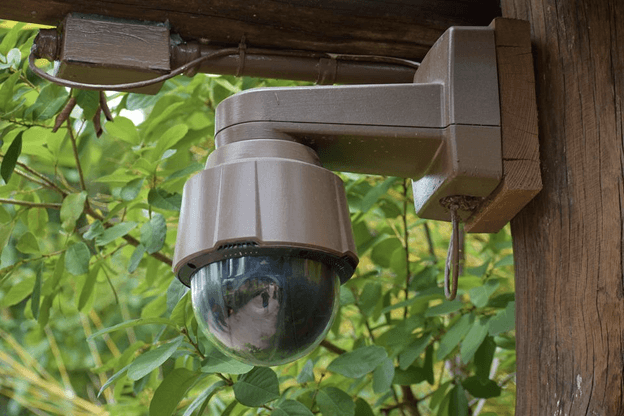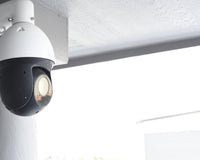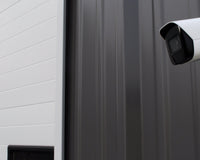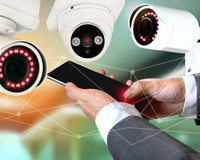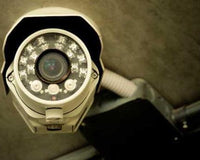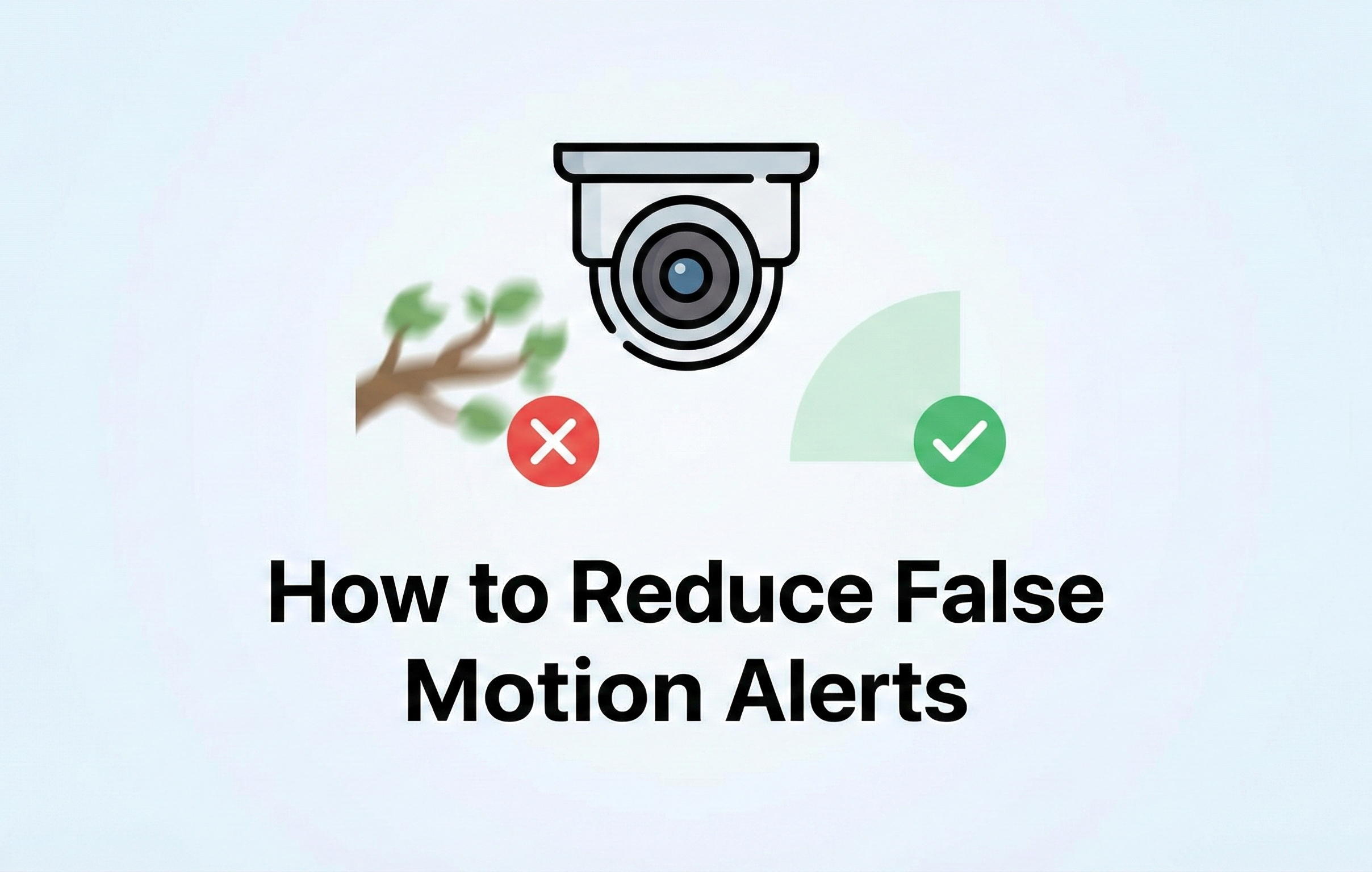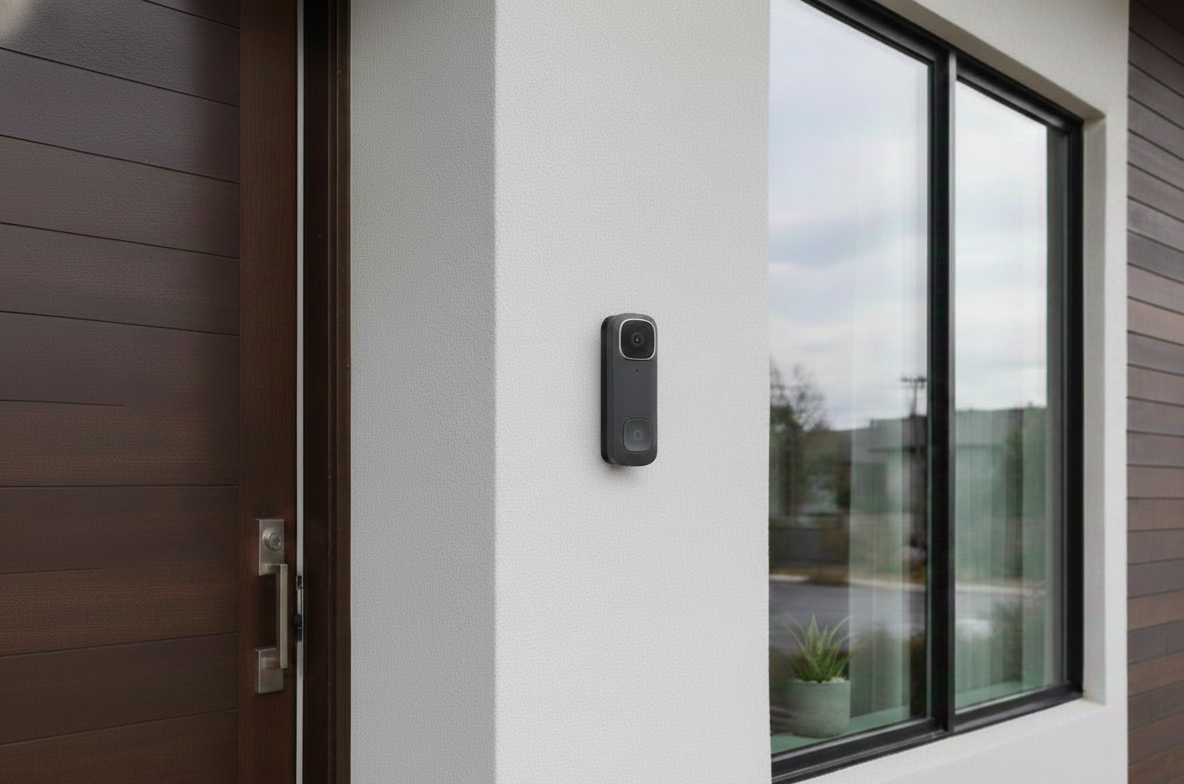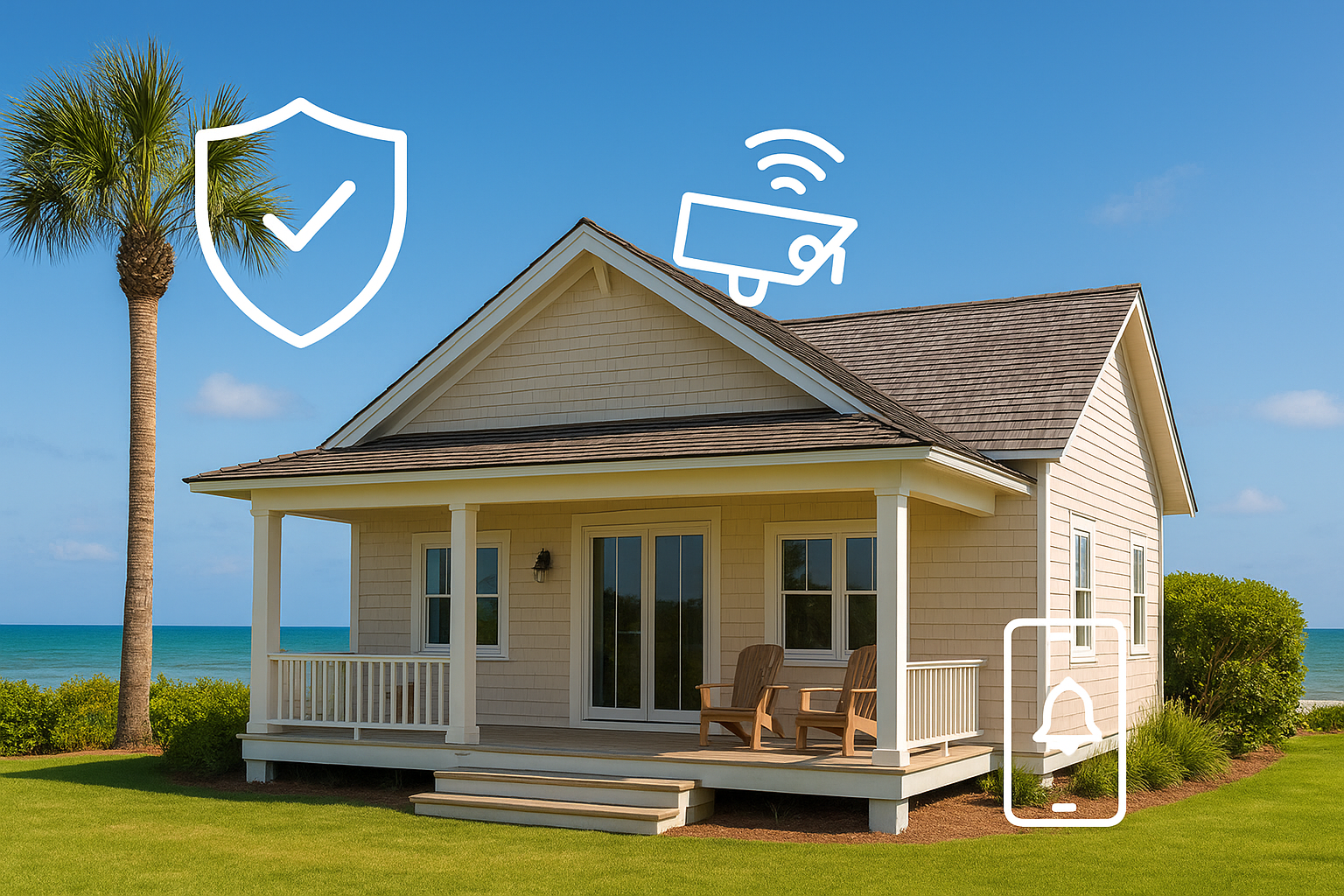A security system's effectiveness is based on the location of its cameras and sensors.
CAREFUL consideration should be given to camera locations in order to safeguard your house and belongings more efficiently.
So, where to mount security cameras?
A security camera should be installed in a location where they can have the best view possible of the areas you want to monitor. This usually means mounting them high on a wall or in the corner of a room.
However, there are other factors to consider when choosing where to mount your security cameras.
Read our guide to learn more about the best places to install security cameras in your home.
Best Places To Install Security Cameras
1. Front Door
The front door is one of the most important places to install outdoor cameras. This is because the front door is usually the main point of entry for burglars and other intruders.
Burglars typically enter the home via the front door (34%), so you'll need a security camera there.
To prevent a burglar from taking out your camera, mount it on the second floor. If you have just one floor, consider enclosing your front door camera in mesh wiring to prevent vandalism.
2. Back Door
The back door should also be a priority when it comes to outdoor cameras. This is because many burglars will try to enter a home through the back door if they can’t get in through the front.
Back doors are easily accessible to thieves, so you may benefit greatly from utilizing a camera here. This includes the sides of your home.
You should install a home security camera on every door in case of invasion, whether they're made for it or not. Keep it out of the reach of people and objects that they can throw at a camera, if possible.
3. Windows
Windows are another common point of entry for burglars. This is why it’s important to have outdoor cameras installed near any windows in your home.
33% of burglars will enter a home by breaking a house through a back window, away from a clear view. They lessen their chances of being caught by not being in plain sight of passing vehicles.
So you can place outdoor security cameras on off-street locations to protect those windows from intruders and vandals.
4. Garage
The garage is another common entry point for burglars. It’s also a good place to keep an eye on deliveries and visitors, so outdoor security camera placement here is a must.
5. Yard
If you have a yard, it’s a good idea to install security cameras around the perimeter. This will help to deter burglars and catch them in the act if they do break-in.
It can also be used to keep an eye on children or pets who are playing in the yard.
6. Driveway
Security cameras can also be installed in the driveway to keep an eye on visitors and deliveries.
7. Hallways
Hallways are a good place to install CCTV cameras because they offer a wide view of the area. This can be helpful in identifying intruders and catching them in the act.
Where Not To Place Security Cameras
Neighbor’s Property
It is important to be mindful of your neighbor’s property when installing security cameras. You don’t want to invade their privacy or place the camera in a position where it can be vandalized.
Trees, Bushes, and Other Foliage
Place security cameras among trees, bushes, and other foliage to make them more difficult to spot. This also makes it easier for burglars to damage or destroy the camera.
Bedrooms and Bathrooms
You should avoid placing a home security camera in bedrooms and bathrooms. This is because these are private areas where people expect a certain level of privacy.
Additional Security Camera Placement Tips
Keep cameras up high
When deciding where to place cameras, the location is extremely important.
- All cameras need to be out of children's reach so they can't be knocked down or accidentally damaged.
- Place exterior cameras at least nine feet above ground level and interior cameras close to the ceiling.
- Check that the cameras are firmly fixed. Some cameras, for example, may be affixed to surfaces using adhesives. Screwing them straight into a wall is more secure.
Angle cameras correctly
Finding the proper angle to match up with the camera's position is just as essential as where you put it.
If you place your home security cameras right on top of windows or doors without adjusting them for optimum viewing, you may only get a burglar's head.
Instead, place cameras beside a door or a window with the camera pointed down toward the entrance.
Don't be hesitant to make your security cameras obvious; up to two-thirds of would-be robbers may be scared away.
Wi-Fi signal strength
A camera won't do you any good if it can't connect to your home Wi-Fi network.
When you're testing different spots for your home security cameras, be sure to check whether or not the location has a strong signal.
You may need to move the router closer to the cameras or find another spot altogether if the signal is too weak.
Use night vision
Most home security cameras come with night vision, which allows you to see in the dark.
This is helpful if you want to be able to see what's going on outside your home at night.
When testing different locations for your camera, be sure to check that the night vision is working properly.
You may need to adjust the angle of the camera or add additional lighting in the area to get a clear view.
Test your cameras regularly
Once you've installed your home security cameras, it's important to test them regularly.
This will help you to make sure that they're working properly and that the footage is clear.
It's also a good idea to review the footage from time to time to see if there's anything that you can improve.
Durability is key
When choosing home security cameras, it's important to choose ones that are durable.
This is especially important for exterior cameras, as they will be exposed to the elements.
Make sure that the camera you choose can withstand high winds, snow, and rain.
You should also consider getting a camera with long battery life so that you don't have to worry about it running out of power.
Total number of cameras
The number of home security cameras you need will depend on the size and layout of your home.
It's a good idea to start with two or three cameras and add more if needed.
Be sure to evenly distribute the cameras around your property so that you have coverage of all the entrances and exits.
You may also want to add additional cameras in areas that are particularly vulnerable, such as first-floor windows.
With so many different things to consider, it's no wonder that choosing the right location for your home security cameras can be tough.
Proximity to valuable objects
When deciding where to put your home security cameras, be sure to take into account the proximity of valuable objects.
You'll want to make sure that any camera you install is not too close to anything that could be damaged or stolen.
At the same time, you'll want to be sure that the camera is close enough to get a clear view of the area you're trying to protect.
Find a balance between these two factors to ensure the best results.
Lighting conditions
The lighting conditions in the area you want to cover with your home security cameras should also be taken into account.
If the area is too dark, the footage may be hard to see.
If it's too light, the camera may have trouble focusing.
You'll need to experiment with different settings to find the right balance.
The Type Of Camera
The type of home security camera you choose will also affect where you can put it.
For example, a bullet camera is best suited for outdoor use, while a dome camera is better for indoor use.
Be sure to choose a camera that's designed for the environment you want to use it.
Out Of Reach Of Criminals
It's important to position your home security cameras out of reach of criminals.
Otherwise, they may be able to disable the camera or steal it.
If you're mounting the camera on the outside of your home, be sure to put it high enough that it can't be easily reached.
You may also want to consider using a security camera system that uses wireless cameras.
This way, the cameras can be placed in hard-to-reach places without the need for wiring. Visible security cameras will also help to deter criminals.
Visible vs. Hidden Cameras
You might be wondering if you should get a hidden security camera or a more visible one.
The answer to this question depends on your needs and preferences. If you want to deter burglars, then it’s best to have visible cameras.
However, if you’re more concerned about privacy, then hidden cameras might be the better option.
It’s also important to note that hidden cameras are more difficult to install and they can be more easily damaged or destroyed.
The bottom line is that it’s up to you to decide what type of camera is best for your home security system.
Security Camera Placement Laws
It is important to familiarize yourself with the law before installing security cameras. This will help to avoid any legal issues down the road.
There are a few things to keep in mind when it comes to the law and security cameras:
- You have the right to protect your property with security cameras.
- You do not have the right to invade someone’s privacy.
- You have the right to use security cameras in public places.
- You do not have the right to use security cameras in private places.
- You have the right to use security cameras for your own safety.
- You do not have the right to use security cameras to intimidate or harass others.
If you're unsure about the law in your area, it's best to consult with a lawyer before installing security cameras.
Conclusion
The best places to install security cameras are high up on a wall or in the corner of a room. However, there are other factors to consider when choosing where to mount your security cameras.
Keep these tips in mind when deciding where to place your security cameras.

